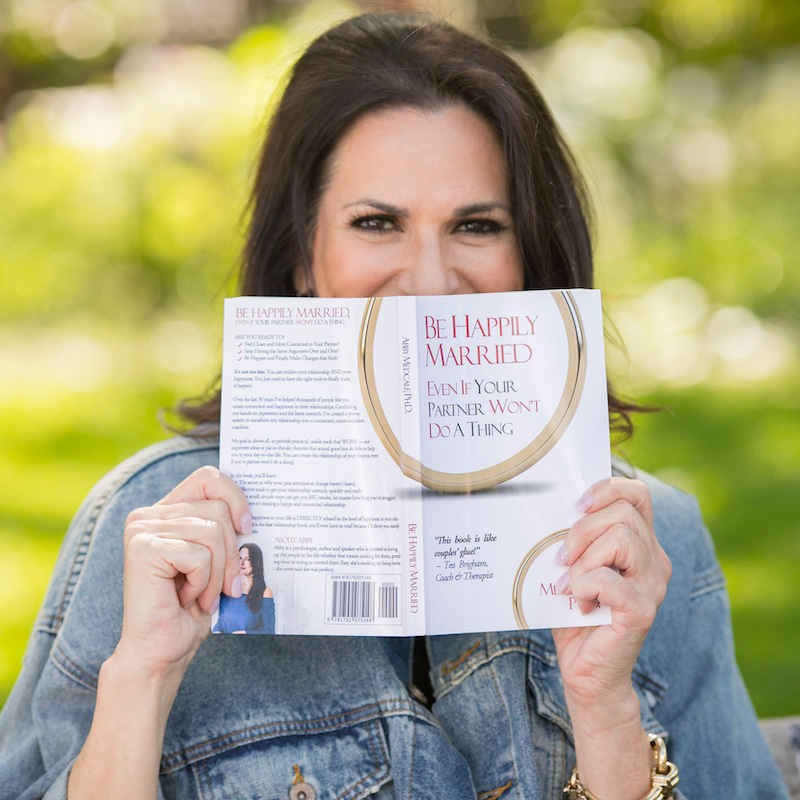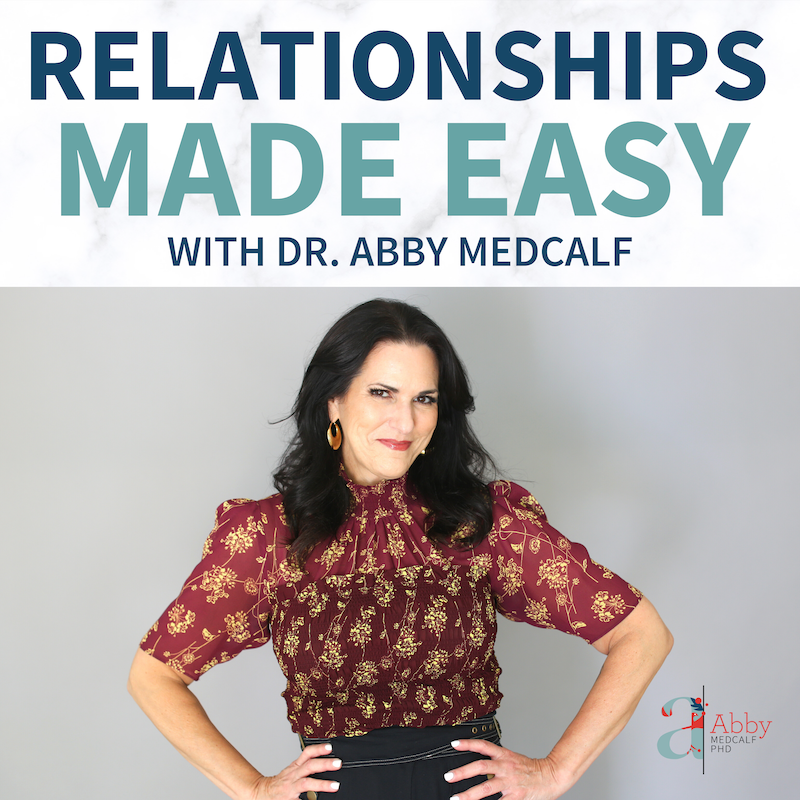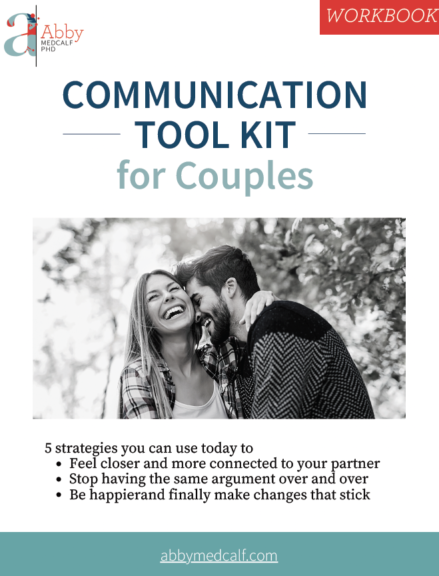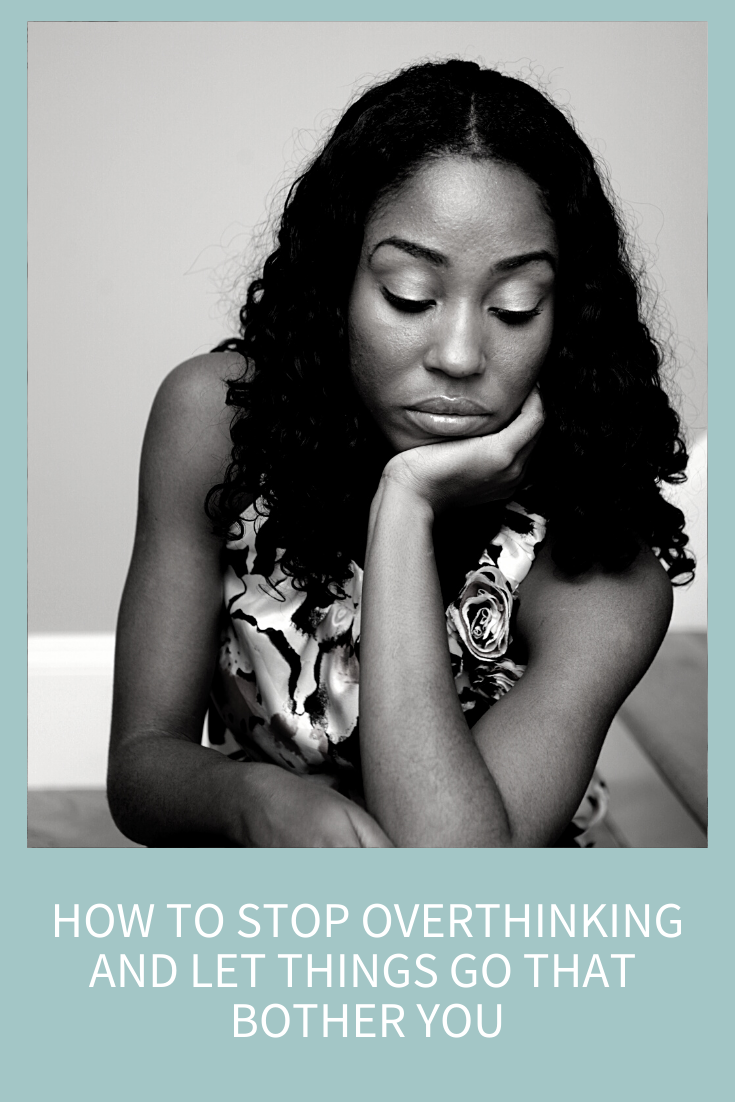Imagine yourself walking in the woods and you come upon a snake (yikes)! Now, there are just three things that snake will do. It’ll attack you (fight), it’ll slither away (flee) or it’ll stay very still and hope the danger (you) passes without seeing it (freeze).
Now, imagine yourself walking into the house and your partner is angry with you about something. There are three things, and only three things, you’ll do. You’ll attack your partner back (fight). You’ll find a way to get the heck out of there (flee). Or, you’ll say absolutely nothing hoping the danger will pass if you just don’t do anything and fly below the radar (freeze).
You act like a snake because, when you’re upset, you’ve engaged a part of the brain called the amygdala. The amygdala is located in the Limbic System, and it’s in charge of things like fear and aggression.
The Limbic System is the part of the brain involved in our behavioral and emotional responses, especially when it comes to behaviors we need for survival like eating, reproduction, and reacting to scary things in our environment. It’s made up of a few things besides your amygdala. It also houses structures like your hippocampus, thalamus, hypothalamus, and basal ganglia.
The thalamus and hypothalamus are all about producing essential hormones and they regulate your thirst, hunger and mood. The basal ganglia is for reward processing, habit formation, movement and some learning. The hippocampus is basically the learning center of your brain and plays a key role in the formation of new memories about past experiences.
But the structure we’re going to focus on right now is the amygdala. The amygdala is the emotional center of the brain so it’s where you get feelings like pleasure, fear, anxiety and anger. The amygdala also attaches emotion to your memories, so it’s got an important role in determining how strongly those memories are stored. Memories that have some robust emotional meaning tend to be the ones that stick. It plays a key role in forming new memories specifically related to fear. Fearful memories are able to be formed after only a few repetitions.
In fact, your amygdala is always on point scanning for any threats in your environment. This can be anything from a tiger about to eat you to your partner keeping their mouth open when they’re eating. The problem is that your amygdala is a diva and overreacts to everything so treats these “threats” the same!
When you focus on you or someone else’s weaknesses or limitations; when you focus on what’s wrong, it reinforces fear, which lights up your amygdala.
I bet this has happened to you. You start thinking of something your partner did that pissed you off and it just makes you angrier and angrier. Then you start thinking of all the other annoying things they’ve done and it’s all you can think about. Before you know it, it seems like annoying things are all your partner does.
When you get stuck in these repetitive cycles of negativity with your partner, (or your sister, friend or boss), you keep your amygdala activated, so your brain basically gets hijacked. When your Limbic System is turned on you can’t reason, think things through or hear suggestions. This is why, when you’re in an argument, you can’t remember all the great tools you learned in therapy or in that great online course!
The good news: You can change this! The first step is to recognize which way you usually respond.
I’m going to take you in-depth into each category next. But, before we jump in, I want you to remember a couple things as we go along:
- Not every characteristic in each category may apply to you. You might think you’re in more than one category. However, you should see yourself predominantly within one of the types.
- You are not your fear. When you’re calm and relaxed you can be different.
- Anger might not be the only time you experience the fight-flight-freeze response. It also happens with other emotions like: depression, anxiety, loneliness, overwhelm, sadness, helplessness, hopelessness, rage, jealousy, annoyance, resentment, impatience and frustration.
Let’s Learn About You!
Now it’s time to go in-depth. I’m going to outline the characteristics, behaviors and feelings, as well as the positive side of being each of the categories.
1) The Fight Response:
If you’re a Fighter, you’re focused on arguing your point and being right. You dig in your heels and some people might even call you stubborn (sorry, I’d never call you that – I said, “some people”). You get defensive and stand by your beliefs first and foremost. It’s possible you’ve lost your temper before and then feel bad about it later, but justify your reasons. Have you ever been in an argument with someone and they said they were done with you and left the room but then you chased them down? If so, you’re a fighter!
When your sibling, friend or partner (insert difficult person here) is talking to you, you’re already thinking of your response and often misunderstand what they’re saying due to your impatience to say what you want to say. The longer the argument or situation goes on, the more rigid you’re likely to become.
You might have a hard time calming down and it might take you a few days to see reason or “come around.” Even after the other person apologizes, you find yourself still feeling angry and not able to accept their apology and move on quickly.
You might notice that you actually look forward to fighting in a way. You feel “right” and can’t wait to express your opinion and you feel almost “high” or an out of body experience when you’re “in it.” If you “see red” and feel like you can’t calm yourself once you get going, you’re likely a Fighter.
Some of the feelings you identify with most often may be anger, resentment, frustration or rage.
It’s important to know that there’s also a good side to being a Fighter. Fighters want to engage so you’re willing to show up and talk about what’s hard. Your true motivation, under all the wrangling, arguing and (maybe) yelling is that you just want to connect. Because it’s not happening, you push harder and try to control more to make it happen. Underneath the Fighter’s tough exterior is someone who just wants to bond and join with others.
When you feel like another person isn’t listening or doesn’t understand, you go into fear mode and fight. However, once you feel a connection or bond; once you know the other person is “in it” with you, you won’t feel a need to fight and great, loving conversations can happen.
2) The Flight or Flee Response:
The person who flees can look different depending on the situation. The obvious forms of flight are physically leaving a room or an argument because you’ve “had enough,” avoiding conflict or fights altogether, or someone who abandons their family or relationship.
But there are other ways fleeing shows up that you might not recognize as readily: Avoiding “endings” of things, such as not showing up for your last day of work, your last session with your therapist, or at a farewell party for a friend. Maybe you call in sick when things are difficult at work or don’t say good-bye when you’re leaving a dinner gathering.
Getting engrossed or lost in social media, emails, the internet, video games, or your smartphone are also forms of escape or fleeing. Some fleeing can, of course, be helpful. Taking a ten-minute break from work or the kids while playing a game on your iPhone is a great way to give your mind a little break. But, other escaping is not as healthy. Doing these activities compulsively or in larger chunks adds up to avoidance (I mean, are you really supposed to be trolling Facebook at work? Do you really have a job where they pay you for that?).
With the advent of smartphones and these technologies being made to be so addictive these types of behaviors are things many people do, but if you also do the other behaviors I’m listing here, you’re likely someone who flees when they get scared or feel threatened.
Lastly, other types of escape include things like using drugs, alcohol, food, shopping, exercise or sex as a means to avoid or not deal with a situation or feeling.
Some of the feelings you identify with often are: What feelings? You’re busy avoiding the ones you don’t like and figuring out ways not to feel uncomfortable!
As with the Fighter, there’s a good side to the Flee’er. All that running also means that sometimes you bump into really cool things! You’re generally not afraid to check out new things, talk to new people, or seek out new methods for feeling better or different. Not all of these are negative! If you’re in this category you could use your willingness to try new things to take on the role of finding new ways of communicating. You’re the type who will find a new therapist or great week-end retreat.
If you’re at odds with your partner, maybe you’ll enroll the two of you in a baking class or a paddle boarding lesson. Novelty is one of the things the brain strives for and it’s a key in having that “in love” feeling again. Novelty is great for couples so finding new and interesting things to do together will create a bond and connection. Instead of running from, think of moving towards something or someone who can help you and your relationship.
3) The Freeze Response:
If you’re a Freezer, you mainly try to stay under the radar. Basically, you’re hoping that if you lay low, whatever danger is around will pass on by. Consistent procrastination, certain types of avoidance and taking no actions, are all things the Freezer can do. Maybe making no decision is how you make your decisions. You spin and spin on things that are bothering you but don’t take action to make changes. Instead, you get into “analysis paralysis” and stay stuck.
Maybe your mother calls and asks when she can visit and you just don’t call back. You don’t want her to come over and you don’t want to have the conversation telling her that, so you avoid her in hopes that she’ll forget or go bug your brother instead.
Maybe you need to call a work colleague back but you didn’t finish the project you were supposed to have done so you avoid meeting. You then keep procrastinating and make the situation worse. Or you might be someone who makes an appointment for something inconsequential like getting your nails done or your oil changed, but when you realize you can’t make it, you feel anxious and upset about cancelling and don’t do it; instead you avoid it and get your nails done or your oil changed somewhere else next time.
Some of the feelings you identify with often are anxiety, depression, beating yourself up, overwhelm and regret.
As with the Fighter and the Flee’er, the Freezer has a good side too because thinking a lot isn’t all bad. You can think outside the box, you think deeply about others and you’re thoughtful. Thinking is a good thing when it’s not taken to the extreme and its positive side creates deep connection and love.
The Bottom Line:
When you’re acting in one of these fear-based modes, whether you fight, flee or freeze, you can’t remember any of the great communication tools you’ve learned or the tips or strategies you’ve been practicing because you can’t access the part of the brain where that stuff is saved!
Brain imaging has shown that when the amygdala is activated by negative emotions, it actually interferes with the brain’s ability to solve problems (or figure out how to get unstuck). Here’s the good news: positive emotions and thoughts do the opposite; they help you with creative problem-solving and strategic thinking.
What you want to do is switch from your Amygdala (Reptile Brain) to another part of your brain called the Prefrontal Cortex.
The Prefrontal Cortex is where your problem-solving, rational thinking, long-term planning, values and judgment all live.
The goal is to get out of the negative emotion of the amygdala and into the compassionate, open and problem-solving prefrontal cortex. If you want to get out of the fighting, frustration and anger you’ve got to engage that Prefrontal Cortex so you can get into connection, peace and fulfillment.
In his book Buddha Brain, author Rick Hanson discusses research that shows that activation in the left prefrontal cortex is associated with more positive emotions. This left prefrontal cortex is a major part of actually controlling negative emotion. So, engaging this part of your brain is critical if you want to control all that negative thinking.
You’ll know when you’ve engaged your prefrontal cortex because you become energized, excited, hopeful, compassionate, curious, thoughtful and patient. You create a new energy, which is exactly what you need to create real change and get unstuck.
Before we move on to my big strategy for dealing with all this, I want to say a word about procrastination. Although the Freezers take procrastination to a higher art form, you might be a Fighter or Flee’er and still struggle with procrastination. No matter which category you fall into, you’ll notice that, after you’ve finally done the thing you were avoiding, you say to yourself, “That wasn’t so bad! Why the hell did I wait so long to do that?!”
You think this because, when you take action, you’ve left the amygdala’s stranglehold and your rational, thinking brain finally kicks in. Your Prefrontal Cortex or rational brain knows it wasn’t that big a deal. Your rational brain can problem-solve, plan ahead, prioritize and all that good stuff that makes you effective in the world.
Specific Strategies for Shutting Down Your Lizard Brain
Now that you know how you predominantly act when you’re in fight, flight or freeze mode, what should you do about it? I’m going to give you specific tools and strategies for each category, but first I’m going to give you one tool that everyone needs to master, regardless of your category.
That one strategy is: Self Awareness.
I could give you 100 effective and awesome strategies and tools, but if you don’t remember to use them in those difficult moments, they’re useless.
You know this from previous experience. You’ve read books, articles, watched videos and maybe even gone to counseling and workshops. But, you keep falling back into the same old habits and you “forget” to use the great tools you’ve learned. It’s because, first and foremost, you’re not self-aware when you need to be.
Self-awareness means training your attention to be in the present moment and not in the past or future. Research shows that people spend almost 47% of their time thinking about something other than what they’re doing. You’re on autopilot for a huge chunk of your day, and you don’t even realize it. You’re distracted and thinking about other things besides what you’re doing and, believe it or not, that’s the root cause of your issues.
There’s also research that shows that couples who take part in mindfulness training are more satisfied with their relationship, more optimistic about their partners and feel closer and more accepting of each other.
The good news is that you don’t need to meditate for hours a day or join the nearest Zen Buddhist temple to work on your self-awareness. Actually, it’s best to work on your awareness during your busy day. If you haven’t checked it out already, please listen to my podcast titled: Why Self Awareness is the Most Important Thing in Your Relationship. I give lots of information and tools in that one so I won’t spend time here on that. You’ll see that when you incorporate these self-awareness tips and strategies you’ll get yourself out of the fear-based amygdala and into the open and problem-solving prefrontal cortex.
For now, here’s a quick tool I didn’t mention in that podcast:
I call it: Wake Up Right
Researchers at the University of Tier, Germany, found that we get stressed right at the beginning of our day, just by waking up. Within minutes of waking up in the morning, you release a bunch of stress hormones because you start thinking of the day you have ahead of you which triggers this fight/flight/freeze response we’ve been talking about. This, in turn, releases a stress hormone called cortisol into your bloodstream.
To combat this, you want to start your day with self-awareness. Wake up and bring your attention to your breathing. Just feel yourself sitting on the bed and bring your awareness to the here and now. Set a positive intention such as: I’m relaxed and happy; today is going to be a great day or I’m energized and capable of taking on this new day. This, literally, takes about 20 seconds (I timed myself this morning when I did it).
Here’s what I DON’T want you to do. DO NOT USE YOUR SNOOZE BUTTON! This is crucial people and I’m going to tell you why. There are actually four key reasons why hitting the snooze is SUPER bad for you:
- Snoozing ruins the behavioral conditioning between the stimulus (your alarm) and the response (getting your butt out of bed). If you were to get out of bed the first time the alarm goes off, it would eventually become an automatic response and the struggle would go away!
- That morning alarm struggle has lasting effects on your day, because of something called sleep inertia-grogginess which leaves you weak and struggling to perform even basic tasks. Studies have found sleep inertia can take two to four hours to shake, even when you feel fully alert!
- Robert Rosenberg, the medical director of the Sleep Disorders Center of Prescott Valley and Flagstaff, Arizona, says that if you snooze and start to fall back asleep after your first alarm, your body gears up for another full cycle of sleep. When the second alarm jerks you awake during the beginning of your next sleep cycle, that incomplete cycle is what leaves you with worse sleep inertia. Again, you end up with this sleep and grogginess residue which makes you more tired all day. Then, you’re likely to crave coffee or sugar for half the day just to get yourself moving. This, in turn, affects your nighttime rest and a really nasty cycle takes place in your life.
- Lastly, this is your first commitment of the day and you’re not keeping it. You’re starting your day with “it’s not enough.” I didn’t get enough sleep. You don’t want to start your day with this as your first thought. So, from a psychological and physiological perspective – get your ass out of bed as soon as you hear that alarm. I guarantee you (yes, I said it) that you’ll feel better, more alert and never want to hit the snooze again if you do this for just two weeks straight.
Now I’m going to come at you with some INDIVIDUAL STRATEGIES FOR each of the categories: Fight, Flight, and Freeze
If You’re a Fighter
If you’re a Fighter, your job is to cool yourself down. Your goal is to act, not react as much as possible. How do you accomplish this magical feat? Here are two effective things you can do:
- Take 3 cleansing breaths. A cleansing breath is a simple, but special kind of breath. Breathe in through your nose for a count of four, hold your breath for a count of five and exhale through your mouth for a count of eight. Research has shown that this calms your Amygdala and wakes up your Prefrontal Cortex.
- Identify a wake up word and start using it with your partner regularly.
If You Take Flight
If you tend to flee, you want to work on staying put. Your goal is to make yourself available to have conversations with your partner. Here are three effective tools to stop fleeing and start staying.
Tip #1:
For one week, keep a log of how you feel when you have the urge to escape in some way (alcohol, drugs, sex, physically leaving an argument, shopping, etc). Notice the time of day and any other defining characteristics. You can do this on your Smartphone, jot thoughts in a little notebook or create a spreadsheet on your computer; whatever works for you. At the end of the week, look for patterns of when you escape in unhealthy ways. Do you always need a drink when you get home from work? Do you need a smoke break every time your boss has issues with you? Did you leave your coworkers farewell party without saying good bye? If you regularly leave the house to exercise, that’s fine. However, make sure it’s not instead of talking things out.
Tip #2:
If there’s an issue with your partner, make a commitment for a specific time to speak. This way, you can’t avoid the conversation (or at least not as easily).
Tip #3:
Do a Grounding Exercise. These exercises do just that – they help you reorient to the present reality or here and now.
-
- For example, if you’re upset you could remind yourself that “Feelings aren’t Facts.” Make this your mantra for a moment and feel yourself in the moment – let the anxiety slip away and get into the reality of right now.
- Another Grounding Exercise is to eat or drink something slowly and examine it. Is it sour, sweet, bitter or salty? Is it hot or cold? What’s the texture like?
- Lastly, you could simply breathe and literally feel your feet on the ground. Wiggle your toes and feel all the points that your feet are in contact with the floor or your shoe. Bring yourself fully to the moment as you ground yourself with the floor.
If You’re a Freezer:
If you’re someone who freezes in stressful situations, your goal is to be loud and proud. You want to make decisions and stop fretting over them. Tell folks what you want and what you need (you might need to figure that out for yourself first). You want to make commitments when you’re not scared so you’ll follow through when you are. Put safeguards into place to follow-up so you can’t back out. Here are three best practices to turn yourself around:
- Success is scheduled. “To Do” lists suck the soul out of you. Even those of you who “like” them, don’t really. You like to check off the things you like to do and ignore or procrastinate on the things you don’t like. Hence, “cleaning the garage” or “meeting with the tax lady” go on your “To Do” list week after week (or even month after month). Eventually, the pain gets too great and you have to do it or you let it drop off the list incomplete. The answer? Take everything off your “To Do” list and find a home for it in your schedule. Yes, schedule out your day, hour to hour. Maybe “cleaning the dog poop” won’t get done until Saturday because you have no time during the week, but it wasn’t going to happen anyway, and now it’s held somewhere. Folks often fight me on this one, until they do it. Then I hear how it absolutely transformed their lives!
- Eat the Frog. This is an old Mark Twain quote that motivational speaker Brian Tracy made famous. Basically, what it means is that you want to schedule your day (see tip #1) and then you want to tackle the most annoying and dreaded thing on your “To Do” list first. Whatever you schedule first every day, should be the thing you dislike the most. The good news is that, once it’s done, the rest of your day will feel awesome without it hanging over your head. Also, you have the most willpower and energy first thing, so your chances of doing a good job with the sucky thing are really good! The key is to not think about it. You become a Nike ad and “just do it.”
- You first. The last strategy for you Freezers is to say your opinion first in every discussion. Put yourself out there right away. Stop waiting for everyone else to say what they want so you can change your response to fit. Instead, you be the first opinion out there.
My top strategy for Dealing with Your Partner and getting them out of their fight, flight or freeze mode:
Your primary objective is to stay calm but match emotion, not tone. Once you do that, then you can get into problem solving and calmly talking. This is a little tool I call “Say Yes First” and here’s how it works. Let’s say your partner is complaining that a coworker is completely horrible and gets special treatment. Your partner has complained about this before and you’ve given them lots of useful suggestions that they’ve ignored.
Usually you’d respond with something like, “You know, you keep complaining about this but you won’t do anything to make the situation better. I’m a little sick of hearing about it.” (Or something to that effect). This results in your partner getting even more angry (now at you) or just withdrawing completely and not wanting to speak with you anymore since you clearly don’t understand their plight.
Instead, I’d like you to “Say Yes First.” In this situation, I want you to see their side of things as best you can and try to really listen with “new ears.” Then your job is to empathize (say “yes”) and say something like, “Darn that sucks. I’m sorry you’re dealing with an unfair situation.” You’re going to match your partner’s emotion, but not their tone (otherwise known as voice level or whining).
By saying “yes” first and empathizing with your partner’s feelings, you’re building rapport and a platform to have further discussion. From this place you can say something like, “Given how things are going with your coworker, what do you think your next move should be?” This is called a “collaborative” or “open ended” question. When you ask a question that can’t be answered with “yes,” “no,” “good” or “fine.” It opens up discussion and gets your partner thinking.
Doing it this way, what do you think your partner’s response will be now? It’s possible that they might even say something like, “Well I guess I just really have to learn to ignore them more – maybe I can take a walk instead of sitting in the break room at lunchtime.” Now, it’s possible they still won’t see the light and might say something like, “I don’t know what to do, nothing seems to make a difference.” Either way, you can begin to have a conversation about what can happen next instead of it all shutting down in anger and denial.
In the end, you want the conversation to switch from fear to problem-solving mode, and “saying yes first” is an effective and quick way to get there.
The next time your mother, brother, partner or boss is arguing with you, I want you to let them say their side of things. Try to really listen to what they’re saying and identify how they’re feeling. Then, I want you to “say yes.” I want you to empathize first with their feelings about what’s going on. Let the other person know you understand what they’re saying. It doesn’t mean you agree with what they’re saying, but you want them to know that you can understand that they feel a certain way, even if you don’t understand why. From there, the door is open to many conversations and deepening your relationship.
Resources and Links:
Research says our minds wander 47% of the time
Mindfulness based relationship enhancement: (when I say it helps couples)
Cortisol levels high after waking up
Rick Hanson, Buddha’s Brain








